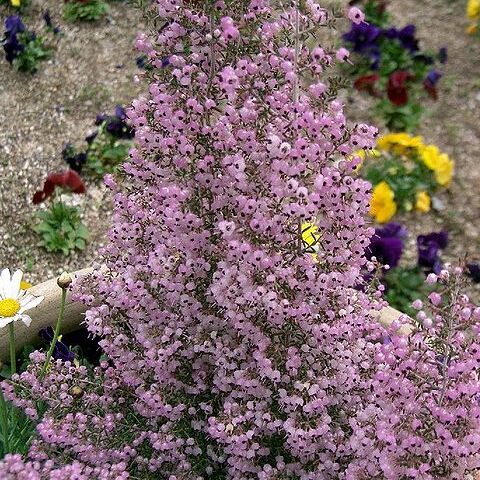Erect shrub, up to ± 2.0 m high. Leaves 3-nate, 4-10 mm long, erect-spreading, linear, deeply sulcate to open-backed, scabrid-puberulous above, paler tomentose below. Flowers 3-nate, appearing umbellate, subcoralline or calycine. Calyx glabrous, roughly papillose, pale outside, red within, closely appressed to corolla, deeply 4-fid; lobes 2-4 times length of tube (1.5-2.0 mm), ovate, acute, ciliate at base, sides ± strongly reflexed. Corolla 3.0-3.5 mm long, broadish cyathiform or subcampanulate, tetragonous, glabrous, rosy; lobes ± 1/2 as long as tube, slightly spreading, broad, obtuse. Anthers subexserted or manifest, ± 1 mm long, lateral, oblong, obtuse, muticous; pore 1/3 length of theca. Ovary subglobose, velvety or glabrous; style long exserted, slender; stigma simple. Flowering time all year.
Erect shrub to 2 m. Flowers small, calycine, cup-shaped, pink.

